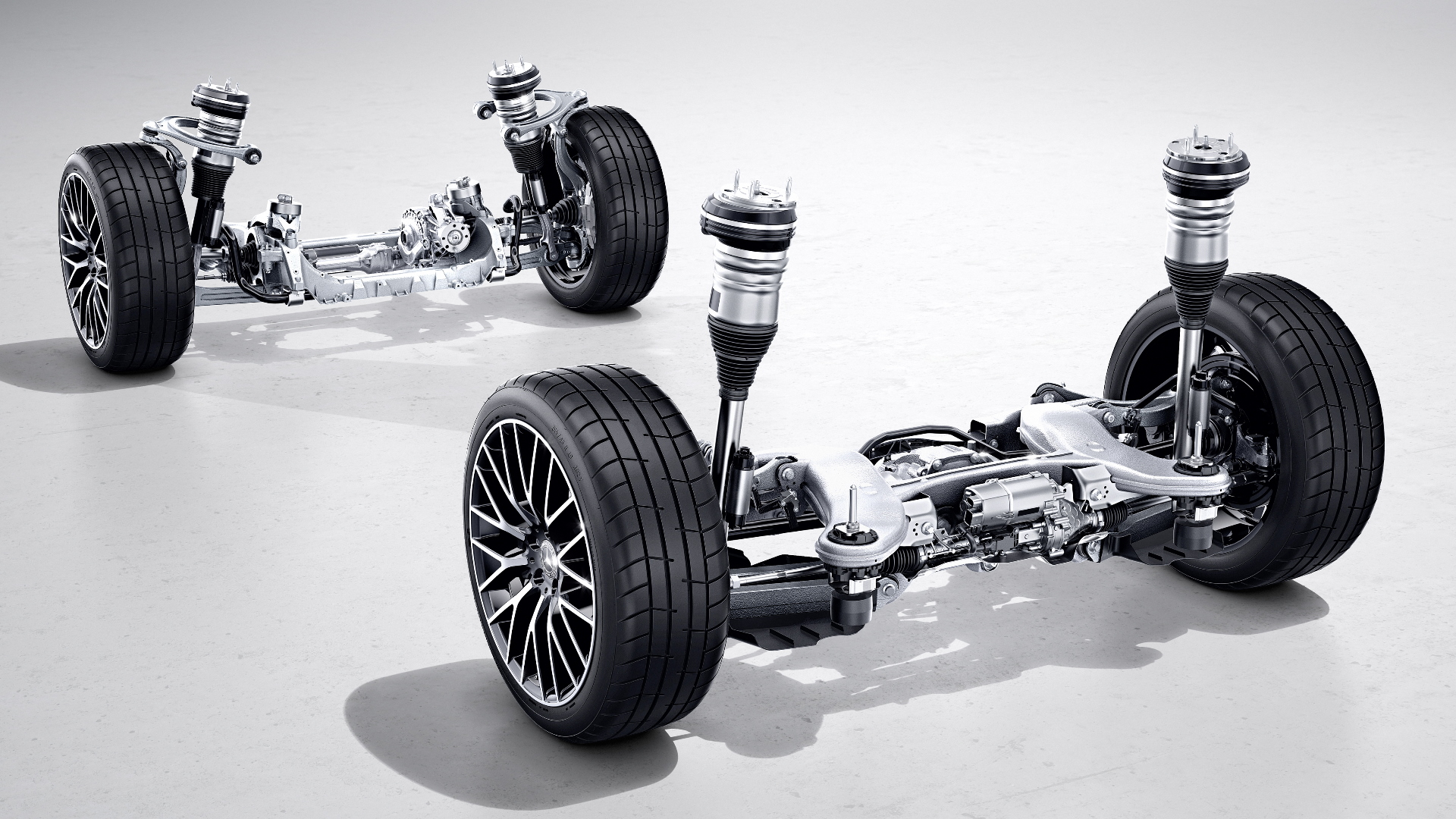

Hybrid cars and electric vehicles (EV) are becoming the norm, and Mercedes-Benz certainly understands that. Much of its lineup now consists of vehicles called “mild hybrids.” These have a small battery pack, a high-power 48-volt electrical system, and a starter-generator that gathers energy from braking. This energy is then utilized in the vehicle’s drivetrain for extra performance via an electric supercharger, start-stop system, and other components that make for a more efficient and powerful car. Until now, this energy was strictly gathered from that starter-generator, however, Mercedes has figured out a new way to get a little bit extra in the S-Class—by using the suspension.
This revelation was buried in a more than 20,000-word press release Mercedes distributed on its website when the car was revealed Wednesday, and consisted of just a short sentence. However, we reached out to a spokesperson so they could further explain the system. More importantly, find out what exactly it does and how it’s beneficial.

“Based on the technology of the 48-volt on-board electrical system, the active dampers now work electrohydraulically and according to the current demand,” a Mercedes-Benz spokesperson told The Drive via email.
“On poor road surfaces, the system can even win back electric energy, which has made it possible to significantly reduce the energy requirement in comparison with predecessor systems.”
Basically, the more action the suspension gets—like in a bumpy road—the more energy it can harvest. The S-Class can now essentially recharge its 48-volt power system simply by traveling down the road. Just like you can make power by spinning the shaft of a motor by hand, the suspension can make power by compressing instead of using power being actuated.
Unfortunately, it’s not a tremendous amount—say, like to pump back into the engine to generate more horsepower—it’s just enough to make the system more efficient. If utilized in a full EV, it would likely net you a minuscule amount of extra range. But still, it’s something. However, it’s worth noting that this is the first of its kind, and it’ll be interesting to see where this technology is in a few years down the road.
Got a tip? Send us a note: tips@thedrive.com